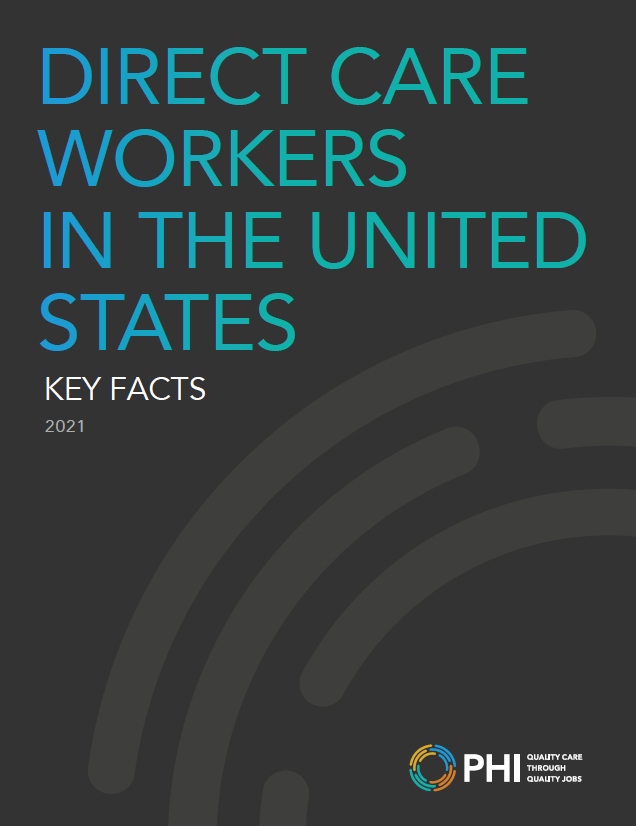By Etta Thordarson, MSW Intern, SDSU Social Policy Institute
Do you know a direct care worker? Thank them for their hard work today! Direct care workers are a crucial facet of the United States Healthcare system. They are the home care health workers, residential care aides, and nursing assistants that many of us rely on to care for ourselves and our community members. PHI, an advocacy organization for healthcare workers, released the report, “Direct Care Workers in The United States: Key Facts 2023”. The report sheds light on details and opportunities for growth within the direct care workforce.
The direct care workforce is one of the fastest growing job sectors adding 1.6 million jobs since 2012 and predicted to grow another 1 million jobs by 2031. This is in part due to the fact that from 2020 and 2060, the population of aging and older adults is projected to increase from 56.1 million to 94.7 million. Adults over the age of 85 are expected to triple from 6.7 million to 19 million. It will be of necessity for direct care workers to assist in meeting the needs of this population. However, there are key facts that the PHI report disclosed that need to be addressed in order to best support the direct care workforce.

Wages for Direct Care Workers
The median annual earning for direct care workers is about $23,688. 39% of direct care workers live in low-income households and 46% of them rely on public assistance. It is a priority to increase wages for direct care workers. Home care workers earn the least with an average hourly wage of $14.50 and nursing assistants make slightly more with an average of $17.06. Despite the necessity of direct care healthcare workers the wages do not reflect the essential nature of the role within society nor does it support basic costs of living.
Diversity
The population of adults over 65 is predicted to become more diverse by 2060. Older adults of color will increase from 24% to 45% and the amount of older adults that are immigrants will grow from 14% to 23%. This also calls attention to the diversity of direct care workers themselves. Home care health workers are generally women, people of color and immigrants. People of color make up 40% of the US labor force but represent anywhere from 56-66% of the direct care workforce. There are concerns that immigrants and people of color are being exploited for their labor and paid low wages as a result.
Training
The report indicates that there is a need for further training for direct care workers. Many direct care workers take positions out of necessity to care for family. It is common for there to be very little training or support for direct care workers which creates disparities in the workforce. The SDSU Center for Excellence in Aging and Longevity (CEAL) launched San Diego Caregiver Connections. The goal of the program is to empower both paid and family direct caregivers through a range of support services, including free training, peer support, and career pathways.
It is important that we continue to research and implement avenues of support for direct care workers and unpaid caregivers. We rely on them to support our vulnerable populations and require their services during unprecedented times like the recent pandemic. In order to support and empower caregivers, more training and support is needed to increase job retention, reduce burn out rates, and eliminate exploitation. Direct care workers are healthcare professionals and their services are indispensable.

